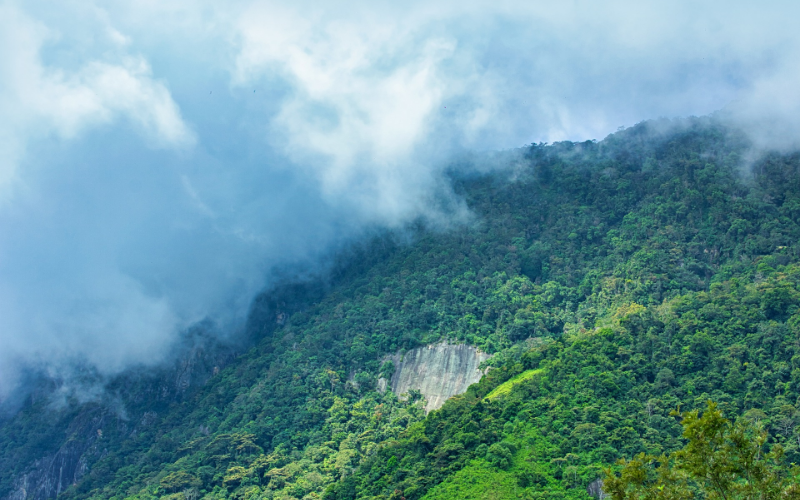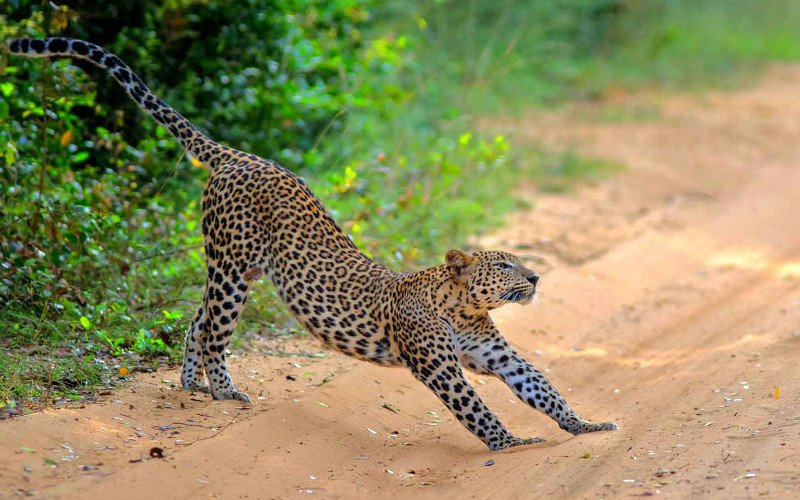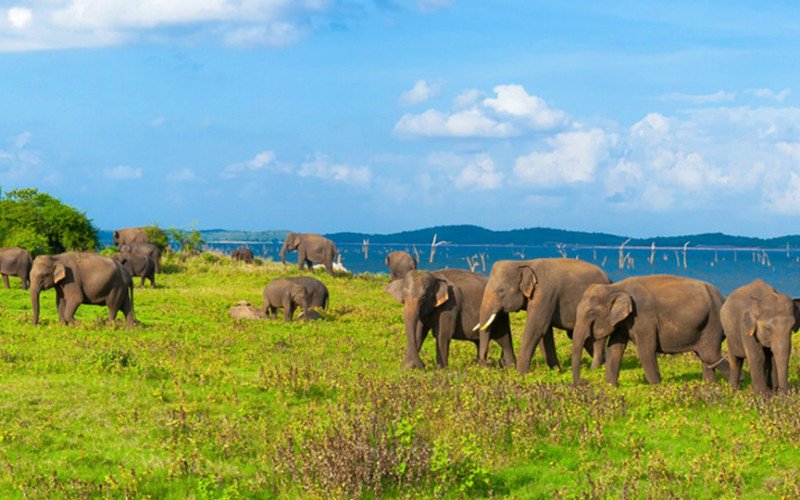About Sinharaja Forest Reserve
Sinharaja Forest Reserve is a Tropical jungle and a biodiversity area of interest that is situated in the southwest marsh wet zone inside Sabaragamu and the Southern regions of Sri Lanka. Sinharaja tropical jungle is the nation’s last feasible area of essential jungle. It covers an area of 11,000 Ha of essential and optional woods. This thin piece of moving site includes a progression of edges and valleys. Over 60% of the trees are endemic to Sinharaja Woods and large numbers of them are thought of as intriguing. There is a lot of endemic natural life, particularly birds however the save is likewise home to more than half of Sri Lanka’s endemic types of butterflies and well-evolved creatures and numerous sorts of bugs, reptiles, and uncommon creatures of land and water. This is one of the primary reasons that UNESCO proclaimed Sinharaja Backwoods as a UNESCO World Legacy in 1988 under the name of Sinharaja Woods Save. In 1936 Sinharaja Woodland was first perceived just like the main extensive fix of the virgin jungle on the Island.
Sinharaja timberland was acknowledged by UNESCO as a biosphere hold in 1978. Perceiving the requirement for the greatest conceivable 4 security the site is close to pronounced as a Public Legacy Wild Region. Being the natural surroundings for intriguing and jeopardized species and an exceptional site for the investigation of the course of organic advancement. Sinharaja Woods is the best spot to watch blended species bird runs. As per a review done on the blended species bird runs, 42 individual birds happen in the herds on normal which makes this the world’s biggest blended species bird rush. The blended species Bird run investigation of Sinharaja backwoods has been going on beginning around 1981 and is considered the World’s longest bird-run study.
Area of Sinharaja Forest Reserve
Sinharaja timberland comprises a progression of constant edges, adjusted roughly in an East-West heading, and lies between the feeders of the Kalu Ganga in the North and the Gin Ganga in the South: There are four principal courses of admittance to Sinharaja. The Kalawana-Weddagala Street from the northwest, the Rakwana-Morning Side home street from the north-east, the Hiniduma-Neluwa Street from the south-west and Deniyaya-Pallegama Street from the South-east. Among these streets, the Kalawana-Weddagala street is more limited and more helpful for guests going from Colombo.
Endemic Species in Sinharaja Forest Reserve
Sri Lanka is home to 830 endemic species, of which 217 trees and woody climbers are found in the swamp wet zone. Of these, 139 (64%) have been kept on hold including 16 uncommon species. Faunal endemism is especially high for birds with 19 (95%) of 20 species kept in the property being endemic to Sri Lanka. Endemism among vertebrates and butterflies is likewise more prominent than half. Various compromised, jeopardized and intriguing species happen inside the save including the panther, Indian elephant, endemic purple confronted langur, Sri Lanka wood pigeon, green charged coucal, Sri Lanka white-headed starling, Sri Lanka blue jaybird, ashy-headed windbag, and Sri Lanka expansive charged roller.
On a birding excursion to Sinharaja, birdwatchers can see nearly 21 of the 33 endemic bird species albeit the genuine number of endemic birds recorded at Sinharaja is more. The previous logging streets give the best admittance to prime birding in Sinharaja where a blended animal types bird run and give you a choice which incorporates Orange-charged Motor-mouth, Peaked Drongo, Humiliated Malkoha, Ashy-headed Snickering Thrush, Green charged Coucal, Lesser Yellow scruff, Orange Minivet, Indian Scimitar Windbag, Dark rested 5 Ruler, Yellow-fronted Barbet, White confronted Starling, Sri Lanka Prod fowl, Yellow-browed Bulbul, Bronze-winged Pigeon, Spot-winged Thrush, Sri Lanka Myna, Legge’s Flowerpecker, Brown supported Needle tail, Green Magnificent Pigeon, Sri Lanka Blue Jaybird, Chestnut upheld Owlet, Sri Lanka Frogmouth, Sealy Thrush, Sri Lanka Hanging Parrot, Dark throated Munia, Layard’s Parakeet, Dark Hawk, Peaked Goshawk, Dim fronted Motor-mouth and Velvut fronted Nuthatch, As the nightfall falls you could search for the sub mainland endemic Sri Lanka Frogmouth.
The environment of Sinharaja Forest Reserve
The typical yearly temperature of Sinharaja is around 23. 6°C. Every year gets more than 2500mm of precipitation and exists in 38 10-5080mm isohyets. The precipitation is all around circulated with top periods, during the two storms, May – July and October – December. There is no drought consistently.
Geology of Sinharaja Tropical Jungle
The rise of the Sinharaja hold goes from 200m to 1300m. It has a moving landscape comprising of a progression of edges and valleys which expects an East-West pattern in the North-Western piece of the hold. In different pieces of the save, the edges and valleys expect a North-West/South-East arrangement. The pinnacle of Hinipitigala is the tallest, ascending to around 1150m. Other significant edges in the hold range between 550-800m. in level, in particular Moulawella (760m), Kosgulana (797m), Sinhagala (742m), Kohilearambe (575my, Dotalugala (769m), and Tibbottagala (904m).
Topography and Soil of Sinharaja Tropical Jungle
The Sinharaja Save exists in the change zone of two significant gatherings of rock types, the South/Western gathering which comprises metasediments-charnokites and scapolites bearing calc granulites, and the good country bunch containing khondalites of metamorphosed dregs and Charnockites. The main geographical element of Sinharaja is the presence of a ‘”Sinharaja Essential Zone” which involves horn blend pyriclasts, fundamental charnokites pyroxene amphibolites, and scapolite.
The dirt of Sinharaja to a great extent has a place with the gathering of Red Yellow Podzolic solis, with obviously recognizable skylines of shifting soil profundity. The dirt is all around depleted with almost no accumulation of natural matter.
Vegetation of Sinharaja Forest Reserve
The vegetation of Sinharaja might be depicted either as a Tropical Marsh Tropical jungle or Tropical Wet Evergreen Backwoods. A few striking qualities of the woodland are the grandiosity of the prevailing trees, the straightness of their bole, the overflow of recovery, and the variety of species. The typical level of the trees differs between 35m-40m. A few people rise even up to 50m. Despite the well-known belief, that underdevelopment is rare and thick; thick scour development does occur on rock retires or holes in the shelter made by falling over-mature trees.
The extraordinary variety of types of Sinharaja woodland makes it hard to recognize biological examples. Nonetheless, some tree affiliations have been perceived and these are the Dipterocarpus (Hora, Bu Hora) an affiliation restricted to the lower heights along the Gin Ganga valley, and the Mesua-Doona (Shorea) affiliation that shapes the framework of the Sinharaja woodland.
The vegetation of Sinharaja is that of moist wet evergreen woodland type with a serious level of endemism. Truth be told some families, for example, Diptcrocarpaceae show an endemism over 90%. The undiscovered hereditary capability of Sinharaja verdure is huge, Out of the 211 woody trees and lianas up to this point distinguished inside the hold 139 (66%) are endemic.
Additionally, elevated degrees of endemism is maybe valid for the lower plants like greeneries, epiphytes too. Out of 25 genera endemic to Sri Lanka, 13 are addressed in Sinharaja. The complete vegetation thickness, including trees, bushes, spices, and seedlings has been assessed to be around 240,000 people for each hectare, of which 95% contain people of the ground layer underneath 1m in level.
The thickness of trees, lianas above 30cm size at bosom level, ranges between 600-700 people/ha. While the number of merchantable people of trees of circumference more prominent than 150cm, territory between 45-55 people/ha.
Creature Life of Sinharaja Forest Reserve
Primer examinations of the fauna of Sinharaja have uncovered that there is a serious level of endemism among the butterflies, fish, creatures of land and water, reptiles, birds, and vertebrates. Truth be told 95% of the endemic birds of Sri Lanka are kept in Sinharaja. Endemism among vertebrates and butterflies is likewise more prominent than half of the bigger warm-blooded creatures, even though elephants were supposed to be ‘normal’ previously, there have not been reports of sightings during the most recent 15 years. Nonetheless, there have been reports of sightings of a couple of creatures in the Eastern Sector.
The most well-known deer species is the ‘Sambhu’. The Mouse deer and Yelping deer are additionally tracked down inside the hold. Panthers are exceptionally only sometimes located, however, their successive presence has been affirmed by tracks and different signs. Badger Mongoose and the Brilliant Palm Civet have been periodically located. The most usually seen primate is the Purplefaced Leal Monkey. Out of the birds kept in the Western area of the hold, 72% were occupant non-endemic and 13% travelers.
One of the most fascinating and brilliant exhibitions to be found in Sinharaja is the presence of blended types of scrounging bird runs, a peculiarity regularly found in tropical jungles. A sum of 00 such Ridicules was methodically noticed, and studies have uncovered that some flocks contained 48 species including 12 endemic species, There endemic birds to be seen in Sinharaja are the Humiliated malkoha, the Sri Lanka Blue Jaybird, the Ashy-headed Motor-mouth, the White-headed Starling and the Green-charged Coucal the most uncommon of Sri Lankan birds. The agamids are the best-addressed gathering of reptiles, the most widely recognized being the Green Nursery Reptile. Of extraordinary importance are the sightings of Calotes liolipis an arboreal species, the most uncommon of all agamids tracked down in the island. The main turtle kept in the save is the Hard-shelled Reptile, while of the types of skins, the spotted skink should be visible frequently. Among the snakes, the Green Pit Snake and Protuberance-nosed Snake are usually viewed as in this timberland and are endemic to Sri Lanka.
Conclusion
Sinharaja Tropical Jungle in Sri Lanka is a unique and essential biodiversity hotspot that covers an area of 11,000 Ha of primary and secondary forests. With over 60% of its trees being endemic to the area, it is home to many endemic species of wildlife, making it a unique and valuable heritage site. Its mixed-species bird run study, started in 1981, is the world’s longest, and it is an important habitat for various endangered species, such as the leopard, Indian elephant, purple-faced langur, green-billed coucal, and others. Sinharaja also provides a perfect opportunity for birdwatchers to witness nearly 21 of the 33 endemic bird species and the sub-continental endemic Sri Lanka frogmouth. The forest receives over 2500mm of rainfall annually, which is distributed throughout the year. Its diverse geography, with rolling hills and valleys, adds to its beauty and unique features. With its exceptional features, UNESCO declared Sinharaja Tropical Jungle a World Heritage Site in 1988, and its conservation efforts continue to protect and maintain its biological diversity.
Best Tours in Sri Lanka
Discover the best tours in Sri Lanka, where every journey unveils a new wonder. Explore ancient ruins, lush tea plantations, golden beaches, and vibrant wildlife. Experience the magic of this tropical paradise like never before!
Best Hotels
Experience luxury and comfort at the best hotels in Sri Lanka. From serene beachfront resorts to charming hill-country retreats, enjoy world-class hospitality, stunning views, and unforgettable stays tailored to your every need.🛌
Flight Booking
Looking to take off on your next adventure? Book your flights with ease and confidence! Whether it’s a dream vacation, a quick getaway, or a business trip, our flight booking service offers unbeatable deals, flexible options, and seamless convenience. Compare airlines, find the best routes, and secure your tickets in just a few clicks. With 24/7 customer support and exclusive discounts, the skies have never been friendlier. Start your journey today and make every mile memorable! ✈️





I like the valuable info you supply on your articles.
I will bookmark your weblog and take a look at again right here frequently.
I am rather certain I will be told many new stuff right right here!
Best of luck for the next!
Good day very nice site!! Guy .. Beautiful .. Amazing ..
I’ll bookmark your site and take the feeds also? I’m glad to search out so many useful information right here within the
publish, we’d like develop extra strategies in this regard, thanks
for sharing. . . . . .